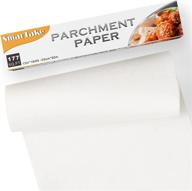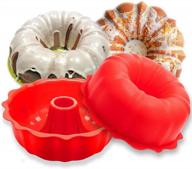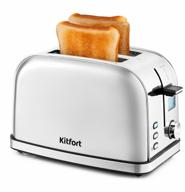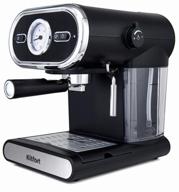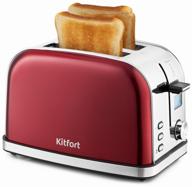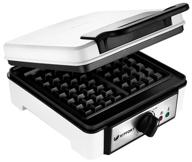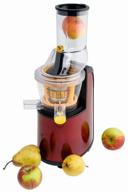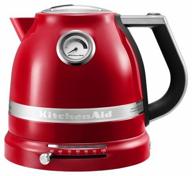Another interesting products


41 Review

Needs and Issues When Searching for Small Kitchen Appliances
When looking to purchase small kitchen appliances, it's important to understand your needs and watch out for common issues that can make the search more difficult. Having clear priorities and realistic expectations can help streamline the process.
Similar products
Identifying Your Specific Cooking Needs
The first step is deciding what cooking capabilities you require from a small appliance. Important questions to ask yourself include:
- What are your most frequent cooking tasks? (chopping vegetables, blending smoothies, air frying foods, etc.)
- What cooking abilities are lacking with your current equipment?
- Are there meal preparations or recipes you make often?
- Do you need an appliance that is versatile for many different uses?
Having clearly defined cooking needs makes it easier to zero in on the most useful small appliances for your kitchen.
Overwhelmed by the Product Variety
The small appliance market seems to grow exponentially each year. Even narrowing it down to a category like "blenders" or "air fryers" leaves you sifting through endless brands, models, and variations. Tips to manage option overload:
- Conduct research online to identify the most reputable manufacturers.
- Read reviews to learn about real customer experiences with appliances.
- Make a list of your must-have features to simplify comparison.
- Limit your selections to 3-5 models that best fit your criteria.
Top products in 🍴 Small Appliances
Evaluating Quality and Durability
You want an appliance built to last, not one that burns out after a few months. Indicators of a quality small appliance include:
- Durable exterior made of stainless steel or die-cast metal.
- Powerful motor designed for frequent use.
- Minimum one-year warranty from manufacturer.
- Brand reputation for quality and performance.
Avoid appliances with mostly plastic components or very short warranty periods. Check reviews for longevity and durability feedback.
Useful Features vs. Gimmicks
Many small appliances now tout advanced features and settings. Useful examples include:
- Variable speed or temperature controls.
- Preset one-touch programs for common tasks.
- Safety features like auto shut-off.
- Dishwasher-safe removable parts.
But be wary of gimmicky features that may overcomplicate the appliance without adding real value. Stick to straightforward controls and components that suit your usage needs.
Ease of Use and Convenience Factors
Look for appliances designed for user-friendly operation and maintenance:
- Intuitive and straightforward controls.
- Easy-to-clean and access compartments.
- Clear instructions and manuals.
- Lightweight or compact size if needed for storage.
An appliance with simple functionality that fits your space and lifestyle will get used more often in the long run.
Taking the time upfront to carefully evaluate your needs will help you invest in small kitchen appliances that provide great value for years to come.
Difficulty Finding Quality Products That Fit Your Lifestyle
With the overwhelming number of products on the market these days catering to every niche and lifestyle, it can still be a challenge to find ones that truly fit your needs and routine. Here are some common obstacles and tips when searching for quality items tailored to your lifestyle.
Too Many Options
Even when you narrow it down to a particular category of products, the choices are endless. For example, looking for a new chef's knife leads you to hundreds of models with different features, brands, materials, and price points. Tips for managing the selection overload:
- Focus first on your must-have needs and preferences.
- Read reviews from real customers with similar lifestyles.
- Research reputable brands known for quality.
- Only consider 3-5 top contenders.
Mismatched Priorities
Products designed for a different lifestyle won't match your most important criteria. For instance, if you have a busy family, quick and easy meal solutions may be your priority. But a meal kit delivery service tailored to gourmet cooking won't fit your needs for fast prep and kid-friendly foods.
| Your Lifestyle Needs | Mismatched Product Features |
|---|---|
| Quick, family-friendly meals | Gourmet recipes with complex techniques |
| Frequent use and durability | Delicate materials requiring careful handling |
| Active and always on-the-go | High-maintenance care requirements |
Impractical or Inferior Materials
Products tailored to other lifestyles may showcase materials unsuited to your needs. For example, outdoor equipment designed for occasional recreational use may lack the durability for your frequent hiking trips. Prioritize products made with materials designed to withstand your real-world usage.
Feature Overload
Items overloaded with bells and whistles you'll never use can overcomplicate a product. Stick to straightforward, purpose-driven features that suit your routine. For example, if you just need a dependable coffee maker for your morning brew, skip the models with wifi, app controls, and fancy milk frothers.
Finding quality products for your unique lifestyle takes some research and filtering. But the effort pays off when you end up with items truly fitted to your needs and daily life.
Overwhelmed by the Variety of Brands and Models
Even when you've narrowed down the type of product you want, the sheer number of brand names and model options can quickly become overwhelming. This flood of choices makes it difficult to determine which option is truly the right one for your needs.
Research Reputable Brands
A good first step is identifying the manufacturers with expertise and reputation in a particular product category. For example, if you're looking for a new stand mixer, focus on respected brands like KitchenAid, Cuisinart, and Breville. Tips for researching brands:
- Read reviews and look for consistent feedback on quality.
- Check company history and how long they've been in business.
- Compare warranties as an indicator of durability.
Understand Key Differences Between Models
Once you've narrowed down trusted brands, take time to understand how their various models differ. Look for insight on:
- Differences in motor power, settings, and capacities.
- Available attachments and accessories.
- Size options and counter space requirements.
- Price jumps between models and why they cost more.
Make a Must-Have Features List
Create a list of the capabilities and functions a model must have for you to consider purchasing it. This helps distinguish between bonus extras and your absolute necessities. For a stand mixer, key considerations may include:
- Power and speed options ideal for your usage and recipes.
- Durability and longevity based on motor and build.
- Bowl capacity that fits your typical batch needs.
- Available attachments like dough hooks or whisks.
Avoid Getting Swept Up in Bells and Whistles
Higher priced models often come with extra features that may not provide value based on your usage. Stick to basics that align with your must-haves. You don't want to overspend on unnecessary extras.
Take Time to Carefully Compare
Cutting through the excess brands and models requires taking the time to methodically assess options using your predefined criteria. But the research leads to purchasing confidence and satisfaction with your final selection.
Unsure Which Features Are Really Useful or Just Gimmicks
When faced with an overload of bells and whistles on new products, it can be tricky to determine which ones offer legitimate value versus just marketing gimmicks. Focusing on functionality over flashy extras can help identify truly useful features for your needs.
Consider Your Actual Usage
Think about how you will realistically use the product on a regular basis. For a new food processor, useful features may include:
- Multiple speed settings for handling soft or hard foods.
- A pulse function for controlled chopping and mixing.
- An included chopping blade to handle vegetables.
But exotic attachments like a juicing strainer or spiralizer probably won't get much use for basic food prep tasks.
Evaluate Durability and Build Quality
Well-made products with quality materials and construction often have great functionality without unnecessary extras. Signs of durable build quality include:
- Stainless steel, die-cast metal, or enameled finishes.
- Reinforced joints and connections.
- Motor power suitable for frequent use.
- Multi-year warranties backing workmanship.
Question the Added Value
| Feature | Useful or Gimmick? |
|---|---|
| Built-in wifi connectivity | Gimmick for most basic appliances |
| Auto- cleanup setting | Useful time-saving convenience |
| App control via smartphone | Gimmick that complicates simple tasks |
If a feature doesn't solve an obvious need or add clear value, it is likely a gimmick.
Read Between the Lines of Claims
Advertising copy can make average features sound revolutionary. But smart consumers look past the hype at real-world functionality. For example, "intelligent temperature control" may just mean basic thermostat functions.
Take time to scrutinize and research features beyond exaggerated marketing claims. Focusing on useful functionality over gimmicky add-ons leads to products that truly improve daily life.
Concerns About Durability and Lifespan of Appliances
With the investment required for major appliances, it's natural to have concerns about selecting one that will provide lasting durability and lifespan. Factors such as build quality, brand reputation, and proper care impact an appliance's longevity.
Examining Construction and Materials
Appliances made with quality materials and solid construction are more likely to pass the test of time. Some durable features to look for include:
- Stainless steel exterior
- Reinforced interior racks and liners
- Sturdy door hinges and handles
- Internal components protected from moisture
Materials like plastic and cheaper metals tend to deteriorate faster with daily wear and tear.
Brand Reputation Matters
Established brands known for reliability have more experience designing appliances with longevity in mind. Checking brand reviews can provide insight on real-world durability from other consumers. For example, Bosch, Maytag, and Miele have strong reputations for washer/dryer lifespan.
Power and Capacity Needs
Selecting adequate power and capacity not only improves performance, but helps appliances last longer. An underpowered refrigerator that constantly runs to maintain temperature is more likely to wear out sooner. Research what power ratings and capacity makes sense for your household size and usage level.
Length of Warranty Coverage
Appliances that come with longer manufacturer warranties tend to have better lifespans. Look for at least 1 year coverage, but 3-5 years indicates greater expected durability. Extended retailers warranties can also offset costs of future repairs.
Regular Maintenance Is Key
Proper maintenance according to manufacturer guidelines helps appliances achieve their full lifespans. This includes:
- Regular cleaning of filters and vents
- Replacing water filters when needed
- Periodic checks and inspection for problems
- Following all care and cleaning instructions
With attention to construction, brand reputation, and proper care, major appliances can serve households reliably for many years.
Wanting an Appliance That is Versatile for Different Uses
Finding appliances that can handle a wide variety of tasks efficiently is a priority for many consumers. The more versatile an appliance, the more value it brings to a household.
Key Traits of Versatile Appliances
Appliances designed for versatility often share certain traits:
- Robust power and adjustable speed/temperature for multiple functions.
- Various included attachments to expand capabilities.
- Streamlined controls and programming for ease of use.
- Durable construction to withstand frequent use.
- Compact size for convenient storage.
Stand Mixers - Baking and Beyond
Stand mixers like those from KitchenAid are popular because they can be used for baking tasks like whipping egg whites or kneading dough, but also food prep jobs with attachments like making fresh pasta or sausages. The motor base powers a wide range of uses.
Air Fryers - The Multipurpose Cooker
Modern air fryers use rapid hot air circulation to mimic deep frying results with less oil. Their convection heating also enables functions like roasting, baking, grilling, dehydrating, and reheating. Preset cooking programs make it easy to shift between tasks.
Multicookers - One Appliance, Many Meals
All-in-one multicookers like the Instant Pot combine the capabilities of a pressure cooker, slow cooker, rice/porridge cooker, steamer, sauté pan, and more. Their versatility saves storage space and cost over multiple appliances.
High Powered Blenders - Beyond Smoothies
Blenders with advanced motors and blades can whip up smoothies, of course, but also handle pureeing soups, mixing doughs, grinding grains, and processing chopped veggies or salsa. Add-ons like personal travel cups increase functionality.
Finding appliances with versatility makes the most of your investment and kitchen functionality.
How to Get an Amazon Prime Subscription for a Profit in Small Appliances
Take Advantage of Free Shipping
One of the biggest perks of an Amazon Prime membership is free two-day shipping on millions of eligible items. This perk can help you save money when purchasing larger or heavier small appliances like stand mixers, air fryers, and instant pots. The shipping costs on these items can really add up, so Prime members get free delivery.
Access Special Prime-Only Discounts
Amazon frequently offers special Prime-exclusive deals on small kitchen appliances from top brands. Keep an eye out for discounts or sales only for Prime members around popular shopping holidays and events. You can score significant savings not available to regular customers.
Utilize Amazon Coupons
In addition to Prime-member discounts, be sure to check for available Amazon coupons you can apply to small appliance purchases. Amazon provides a wide range of coupons across all product categories. Some may only be able to be used by Prime members, providing further exclusive savings.
Stack Savings with Amazon Credit Cards
Signing up for an Amazon Prime Rewards Visa Signature card can help you earn even bigger savings on small appliance purchases. You receive 5% back on all Amazon purchases as a reward point rebate. When stacked with Prime discounts and coupons, the savings really add up.
Comparison Shop with Ease
One of the best features of Amazon Prime is making it easy to comparison shop between listings. You can check multiple sellers and listings for the same small appliance model and find the best price with free shipping. This allows you to find the best deal available.
With the various Prime member savings, coupons, credit card cash back, and price comparison options, an Amazon Prime subscription can really pay for itself when purchasing small kitchen appliances.
"Top 10 Small Appliances For Your Kitchen"
Here is a list of the top 10 small appliances for your kitchen, based on the search results:
- Instant Pot Vortex Plus 6-Quart 6-in-1 Air Fryer
- Ninja Digital Air Fry Countertop Oven
- Hamilton Beach 0.9 Cu. Ft. Microwave Oven
- Philips Premium Airfryer XXL
- Breville Smart Oven Air Fryer
- Compact espresso machines
- Blenders
- Food processors
- Pressure cookers
- Cuisinart Deluxe Electric Griddler
What Are The Pros And Cons Of Using A Small Appliance For Meal Prep??
Pros of using small appliances for meal prep:
Cons of using small appliances for meal prep:
What Are Some Small Appliances That Are Good For Meal Prep??
Here are some small appliances that are good for meal prep, based on the search results:
- Food processor
- High-quality knives
- Measuring cups and spoons
- Food scale
- Kitchen utensils (whisk, tongs, spatula, wooden spoon, silicon spoon, ladle, slotted spoon, can opener, etc.)
- Cutting boards
- Saucepan and sauté pans
- Sheet pans
- Containers (glass storage set, mason or Weck jars, reusable food bags)
- Spiralizer
- Rice cooker
- Food chopper
These small appliances can help make meal prep easier and more efficient by allowing for tasks such as chopping, slicing, shredding, and mixing. They can also help with portion control and accurate measuring, which can be important for maintaining a healthy diet. Additionally, some small appliances, such as air fryers and pressure cookers, can help make healthier meals by using less oil or fat.





